Finding the Perfect Way to Cook rice? You can get precisely cooked rice every time using a Sous Vide cooker. This procedure is straightforward and easy to follow, and the results are excellent!
As day by day the method of Sous Vide Cooking is growing, people are investing more in Sous Vide Cooker for Cooking their favorite dishes at home. Basmati rice can be cooked perfectly using the sous vide method. It is considered a great method for cooking rice because it ensures the rice is evenly cooked. Unlike traditional cooking techniques, sous vide allows you to cook your food at a specific temperature without having to worry about overcooking or undercooking owing to variations in various types of stoves and ovens.
In Indian families people don’t find reason to cook Basmati Rice. This is the dish they cook in their day-to-day life. Here's a classic recipe for sous vide basmati rice:
Ingredients required to cook Basmati Rice
Following are the ingredients should be collected at one place before beginning the process to cook Basmati rice.
1.Basmati rice : In this recipe we are taking 1 Cup Jasmine rice however you can take any type of uncooked rice which is mostly liked by your family members.
2. Filtered water : First the water is required for rinsing the rice after 1 and half cup of water is used to absorb the rice as it starts cooking.
3. Butter, Ghee or Oil : Adding butter ,ghee or oil is optional in rice as it helps the rice from sticking together with grains.
4. Salt : It is added as per the taste required.
Equipment needed in Cooking Process
These are the essential tools required while cooking the Rice.
01. Zip- top Freezer Safe Bag
When cooking using the sous vide method, a freezer-safe bag is preferable since it is stronger than conventional plastic bags.
02.Sous Vide Cooker
The Suvi Sous Vide Cooker is popular for their application service, but you can use any Sous Vide Cooker as per you will.
Step by step Instructions for Cooking rice
Step:1 Rinse the basmati rice under cold water until the water runs clear. This helps remove excess starch from the rice grains.
Step:2 In a sous vide-safe bag or a vacuum-sealable bag, combine the rinsed basmati rice, water, butter or ghee, and salt. You can adjust the amount of salt according to your taste preference.
Step:3 Seal the bag using a vacuum sealer or manually using the water displacement method to remove the air from the bag.
Step:4 Preheat your sous vide water bath to 185°F (85°C).
Step:5 Once the water bath has reached the desired temperature, carefully submerge the bag of rice into the water bath, ensuring it is fully submerged.
Step:6 Cook the basmati rice sous vide for 30-45 minutes. Cooking time can vary depending on your desired level of tenderness. Keep in mind that longer cooking times can result in softer rice grains.
Step: 7 After the cooking time has elapsed, carefully remove the bag from the water bath and open it.
Step: 8 Fluff the cooked basmati rice gently with a fork to separate the grains.
Step: 9 Serve the sous vide basmati rice as a side dish to accompany your favorite curries, stir-fries, or other main dishes.
Note: The specific brand or type of basmati rice you are using should be noted in Sous vide cooking times. Adjust the cooking time accordingly if you prefer your rice to be firmer or softer.
How can we Store, Refrigerate and Reheat Rice?
You can also store the rice in the freezer for a long period.
To store, freeze, and reheat Basmati rice using the sous vide method, you can follow these steps:
- Cook the Basmati rice: Start by cooking the rice according to your preferred method. Make sure the rice is cooked al dente (slightly undercooked) since it will continue to cook during the reheating process.
-
Cool down the rice: Once the rice is cooked, spread it out on a baking sheet or a large plate to cool down quickly. This helps prevent the rice from clumping together.
-
Portion the rice: Divide the cooked and cooled Basmati rice into individual portions based on your needs. Place each portion into a vacuum-sealable bag suitable for sous vide cooking for future whenever you want to eat.
- Vacuum-seal the bags: Seal each bag tightly using a vacuum sealer to remove any excess air and ensure airtight storage. If you don't have a vacuum sealer, you can use a ziplock bag, submerge it partially in water to remove air, and seal it tightly.
-
Label and date the bags: Use a marker or a label to indicate the date of freezing and any other relevant information, such as the portion size or cooking instructions. This will help you keep track of the rice and its freshness.
-
Freeze the bags: Place the sealed bags of Basmati rice into the freezer and allow them to freeze completely. Freezing the rice individually in portions makes it easier to reheat only the desired amount later.
-
Reheating the rice: When you're ready to reheat the Basmati rice, remove the desired portion from the freezer. Keep the rice in the sealed bag and submerge it in a pot of water heated to around 135°F to 140°F (57°C to 60°C). You can use a sous vide cooker to maintain the water temperature if you have one.
- Reheat in the water bath: Let the rice reheat in the water bath for about 30 to 45 minutes. This will ensure even heating throughout the rice without overcooking or drying it out.
- Remove and serve: Once reheated, carefully remove the bag from the water bath. Open the bag and gently fluff the rice with a fork to separate the grains. Serve the Basmati rice immediately.
These steps allow you to store, freeze, and reheat Basmati rice using the sous vide method, preserving its texture and flavors.
Flavor Variation For Basmati rice Can be Consumed
While sous vide cooking is primarily known for its ability to achieve precise temperature control and consistent results, flavor variations in Basmati rice can be achieved by infusing additional ingredients into the cooking process. Here are some flavor variations you can try when making sous vide Basmati rice:
01. Coconut Basmati Rice: Add coconut milk or grated coconut to the rice before sealing it in the sous vide bag. The rice will absorb the coconut flavor during the cooking process, resulting in a subtly sweet and aromatic rice
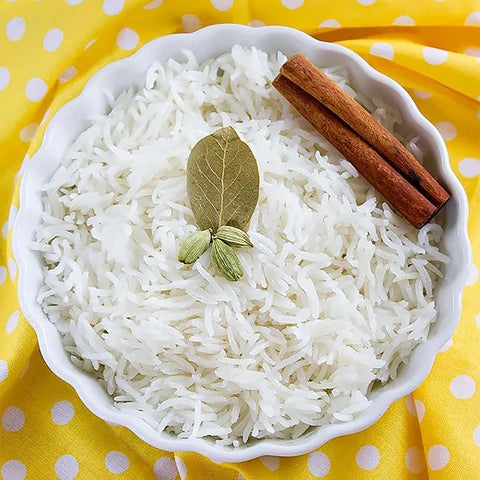
02. Saffron Basmati Rice: Infuse the rice with the vibrant flavors of saffron by adding a few strands of saffron to the bag before cooking. The heat of the sous vide process will release the saffron's aroma and impart a beautiful golden color to the whole quantity of rice in a sealed bag.
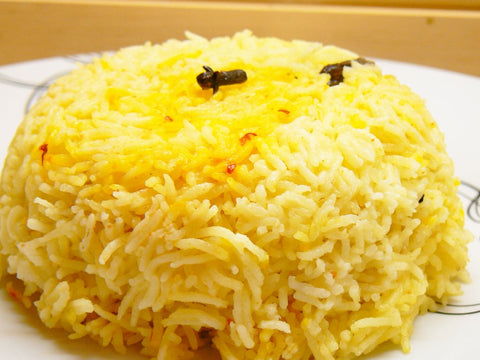
03.Lemon and Herb Basmati Rice: Add fresh lemon zest and a handful of chopped herbs like cilantro or parsley to the rice before sealing. The citrusy notes and the fresh herbs will lend a bright and refreshing flavor to the rice.
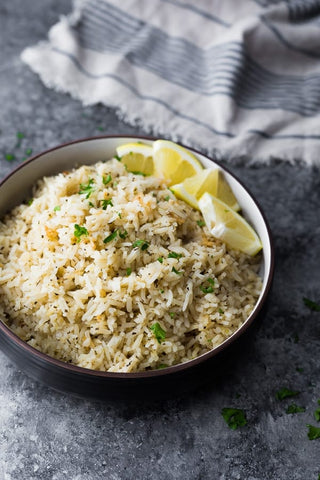
04.Spiced Basmati Rice: Create a flavorful blend of spices by adding whole spices such as cinnamon sticks, cardamom pods, cloves, and star anise to the rice. These aromatic spices will infuse the rice with a warm and fragrant taste and tend to result in spiced Basmati Rice.
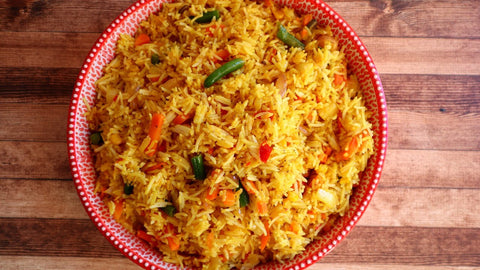
05. Tomato and Garlic Basmati Rice: Enhance the savory profile of Basmati rice by adding diced tomatoes, minced garlic, and a pinch of chili flakes. This combination will give the delicious flavor of rice a tangy and slightly spicy flavor.

06. Cilantro Lime Basmati Rice: Mix in freshly squeezed lime juice and finely chopped cilantro to the rice before sealing. The zesty lime and the herbaceous cilantro will add a burst of freshness to the dish.
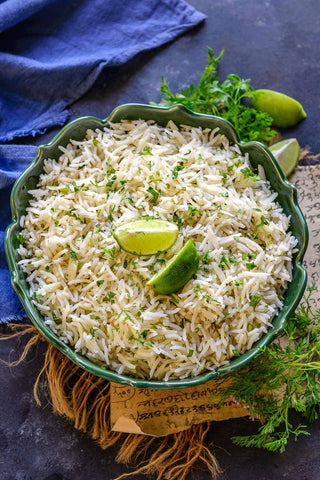
Sous vide cooking allows the flavors to penetrate the rice grains evenly, resulting in a more nuanced taste. Enjoy experimenting with these flavor variations to create unique and delicious Sous vide Basmati rice dishes.



